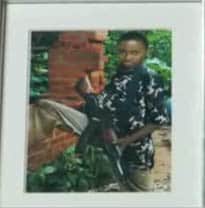The most disturbing thing about the video for War Child’s campaign to support the some 300,000 child soldiers fighting worldwide, is when the reeling in your stomach settles, and you realize that while the images are fictional, the meaning behind them is true.
Like Stupid.ca (the anti smoking campaign that grabbed us by the lungs a few years back),War Child’s Camp Okutta campaign (), Help Child Soldiers uses interactive and sometimes shocking video and web media to educate and inspire. Interesting that the knee-jerk reaction we have when it’s suggested we’re ignorant is often more intense than our reaction to seven year olds toting machetes and looking for land mines. The Help Child Soldiers campaign takes these disturbing ideas out of their original context, and exposes us like a naked-in-math-class nightmare: with the amount of thought we give to the suffering of these kids, we’re practically signing them up for target practice.
A disturbing illustration of Canada’s ignorance to the issue of child soldiers, the video shows concerned Canadians contributing to knife donation drop-offs, little old ladies knitting balaclavas to send to children in war zones, and a first grade class tracing their bodies to make targets. The campaign was put together pro bono by T.O. firm john st, and Hill & Knowlton Canada, and it shows Canadians supporting the young fighters the way Alex Trebek encourages us to support starving children. The characters in the video are War Child’s disturbing depiction of our attitude towards the atrocities these children face: as long as we continue to do nothing, we might as well be shipping AK-47s across the Atlantic in bubble wrap.
Fighting in 19 different conflicts worldwide, it’s hard to believe the plight of child soldiers is so easily ignored. Forcibly taken from their families, or left orphaned with an armed group becoming their only option for survival, there is no choice in this equation. To numb the children to the brutal acts they are forced to perform, officers ply them with drugs, alcohol, and brown-brown, a combination of cocaine and gun powder.
The video succeeds in the campaigns main goal: War Child wants to get people talking. Describing the video as "a call to action," War Child says the campaign is "meant to capture your attention, leaving you asking questions and seeking answers." War Child not only works to raise awareness, they’re also on the ground, helping to prevent child soldiers from being recruited, and to help children rescued from arms groups re-integrate into society.
So the question remains: Do we care? Should we? As citizens of an extremely priviledged and stable nation, do we have an obligation to children thousands of kilometres away living lives we can barely comprehend? If we’re going to consider ourselves educated, conscientious human beings – then ABSOLUTELY. How you exercise or ignore that obligation is up to you, but War Child’s latest campaign is sure to get you thinking about it.
Let’s do something.
www.helpchildsoldiers.ca
THINGS YOU SHOULD KNOW:
– Most cell phones contain a mineral called coltan, mostly found in the Democratic Republic of Congo, and the exports of coltan have funded much of the devastating military conflict there.
– Child soldiers not only serve in rebel group armies, by government armies as well
– Over 66 per cent of casualties in war are children
– Child soldiers are used on the front lines, regardless of gender: as combatants, human shields, spies, sex slaves, messengers, cooks, and ‘wives’ for generals.
– Canada gives only 0.28% of our Gross National Income to supporting other countries




 Follow Us On Instagram
Follow Us On Instagram
